The French government had run a series of semiautomatic rifle trials in 1913 and had several designs with a lot of potential, like the A6 Meunier. In fact, most of the designs had dropped the 8mm Lebel cartridge, understanding that its rimmed design was obsolete. However, as war began to look more and more likely, the trials program was abandoned. The rationale was that the eve of war was not a wise time to be rearming troops with new weapons. Once trench warfare took hold and raiding parties emerged as one of the few effective combat techniques, the need for a selfloading infantry rifle came back into focus.
Three French engineers named Ribeyrolles, Sutter, and Chauchat (yes, the same team that developed the CSRG 1915 Chauchat light machine gun) quickly devised a design that was initially presented to the government as a conversion kit to make the 1886-93 Lebel rifle into a self-loader. In reality, little more than the wooden furniture was actually used from the Lebel, but it got the design in the door.
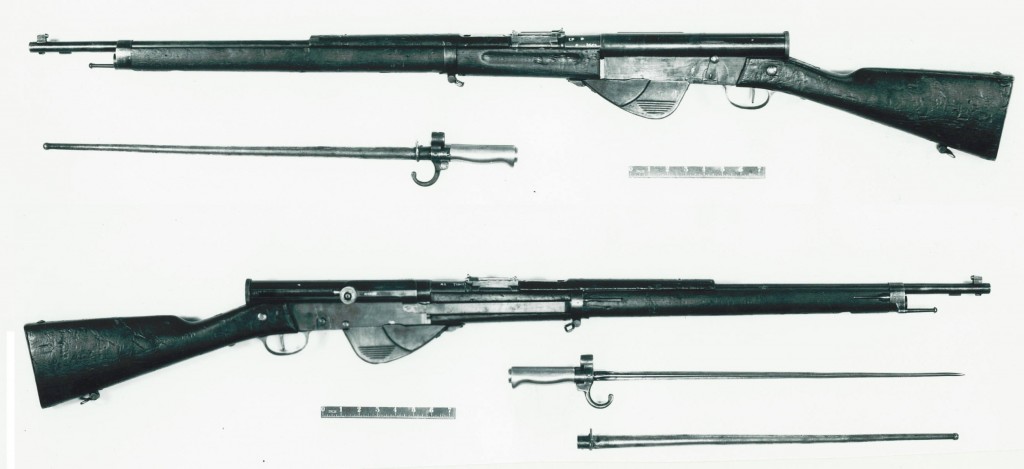
The design was a gas piston operated, rotating bolt rifle. The under-barrel tube magazine from the Lebel was replaced with a gas piston and return spring, and a completely new magazine and receiver were fabricated. As the gas piston moved backwards it pushed a 2-part operating rod connected to a bolt carrier and bolt. The bolt carrier had a camming groove that forced the bolt to rotate 90 degrees and unlock when it was pushed rearwards.
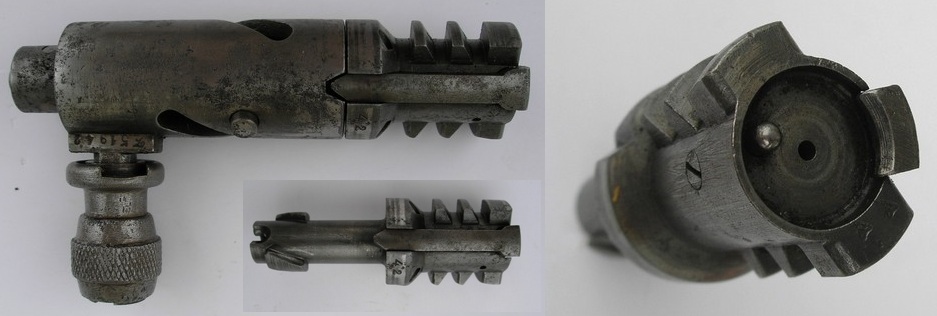
The rifle was chambered for the standard 8mm Lebel cartridge, as this would simplify ammunition supply. However, it did not use the standard 5-round Berthier clip (probably because it was developed before the 5-round M1916 Berthier was adopted), and this was a distinct disadvantage in the field. The RSC 1917 clips was fairly flimsy, and not overly reliable.
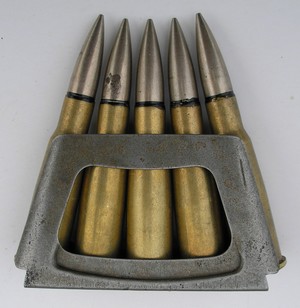
Instead of the now-conventional top loading, the RSC 1917 was reloaded from the bottom. The magazine was hinged open, and a new clip loaded up into the receiver before closing the magazine again.
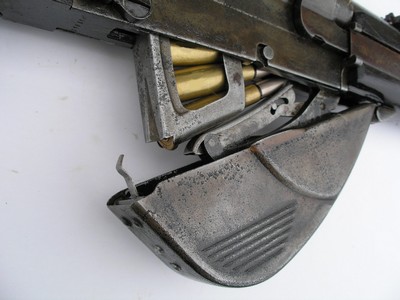
The RSC was formally adopted in May 1916 as the Modele 1917, but problems finalizing the design delayed the start of mass production until April of 1917. Manufacture continued until September 1918, with a total of 85,333 rifles made. Ultimately the Mle 1917 was a bit of a disappointment, as it suffered from many problems in field use. The large open slot that the charging handle ran in was prone to letting dirt into the action, parts breakage was fairly common, and the rimmed cartridge case and poor clip design combined to cause unreliable feeding.
These faults were all recognized, and simply due to the very hasty conditions under which the rifle was designed and tested. A revised and much improved Mle 1918 was put into production at the very end of the war (4,000 made in November 1918) which solved many of the early rifle’s problems. The Mle 1918 had a rotating dust cover to protect the action, it used standard Berthier 5-round clips, it added a last-round bolt hold-open, and an improved gas system. The 1918 was also lighter, weighing 10.5 pounds compared to the 1917’s 11.5 pounds. A shorter carbine version of the Mle 1918 was also made in small numbers.
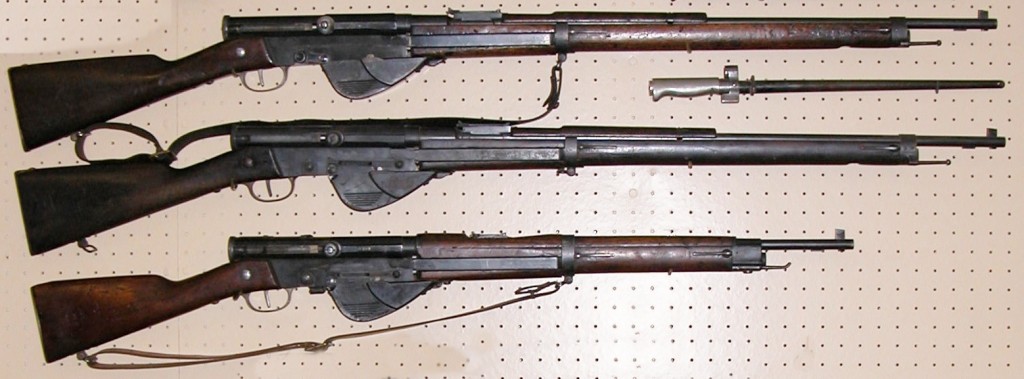
The 1918 rifles saw very little if any use in WWI, but they were used in the 1920s Rif War in Morocco, and reportedly functioned quite well there. In 1935, the majority of the RSC self-loaders or both models were converted into manually-operated rifles by plugging the gas ports, and they were issued to reserve troops.
We have a copy of a French manual for the Mle 1917, which you can download here:
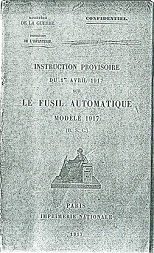

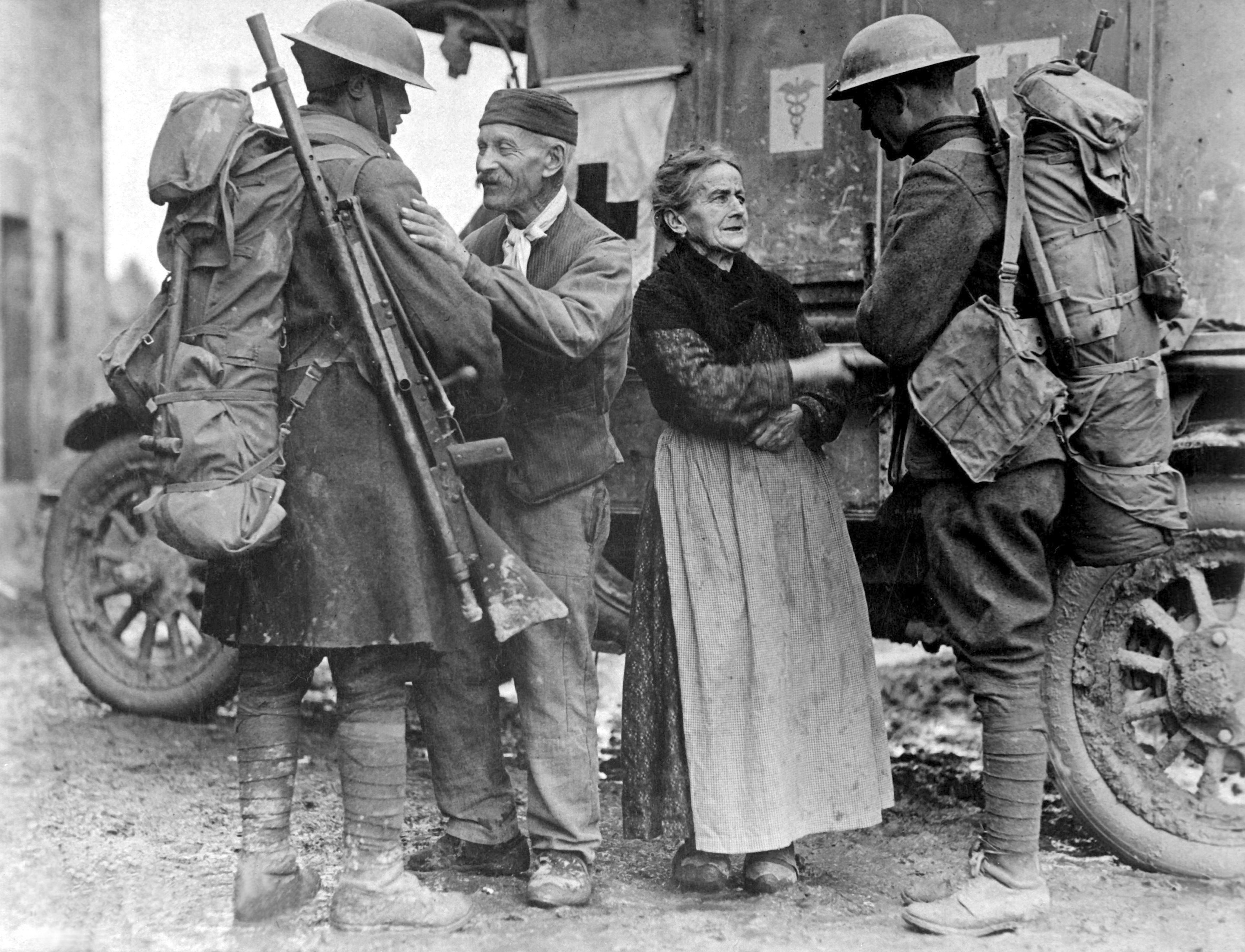

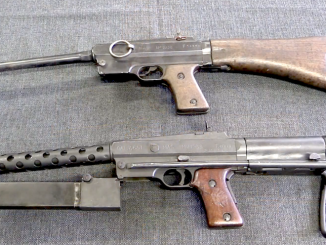
I remember reading a forum post from someone in France comparing many parts of an M1 Garand with an RSC, essentially coming to the conclusion that America took heavy influences from its design and could because it was an allied power. The trigger pack, operating rod etc were very similar in concept, just the Garand was much more streamlined in ergonomics, and used a unique clip and magazine system using the oprod to put force on the follower, which I still believe was ingenious and cut many magazine reliability issues.
I didn’t know much of the talent behind the Chauchat was taken for the RSC, but it would definitely explain features like the circular part of the receiver and the design of the bolt.
Comparison of the parts of an M1 Garand with an RSC 1917: http://mountainpreparedness.blogspot.fr/2011/04/french-connection-in-history-of-m1.html
Nice find! That’s a very good comparison.
I thought Obama designed the Garand?
C’est interessant, n’est-ce pas?
There’s a fellow who’s been trying to sell one of these on GunBroker off and on for a while. I corresponded with him, and he’s just fiddling around the edges of a collection — he’s sold some other premium collector pieces, like a Sudanese AR-10 built semi on an H&H receiver. I don’t know if he ever sold the RSC. It was in very good condition, and not plugged, although I can’t imagine its buyer shooting it. Bids got up around four thousand without making reserve, when I was paying attention.
As the first adopted semi-auto military rifle, decades before the US and Russia got on board, it’s very significant historically.
I didn’t know about the 1918 versions until I read this post. The carbine certainly looks ahead of its time.
Are the lugs on the bolt actual lugs, or are then an interrupted thread as on artillery pieces (writ small, obviously)?
One of my compatriots has shot the 1918 in the bottom photo, but unfortunately we don’t have any useful video of it. We’d really like to add one to our reserve collection, but as you say the prices have gotten really high. They do show up in the high end auctions from time to time.
The lugs are actually lugs and not interrupted threading. FWIW, Jean Huon’s “Proud Promise” has a photo of a musketoon version with a big handguard that looks even more modern.
Is that a spring loaded ejector in the bolt face?
Or does it strike something during the bolt travel to eject?
Those multi row buttress form lugs are reminiscent of Ross or Newton, but this appears to be so much better thought out than either of those inventor’s guns.
I’m curious — What was the rationale behind plugging the gas ports for issue of the rifle to reserve troops as a manually-operated weapon? It doesn’t seem to make much sense, unless the powers-that-be actually thought that the soldiers of that period would have a hard time mastering the additional complexities of a semi-automatic weapon.
or turning them on those powers that were…
France is one of those many unfortunate places where too many of the population believe that you improve your standard of living, not by making useful things, but by politics and revolutions.
Most of the guns made were the 1917s, and plugging the gas ports would prevent ongoing issues with parts breakage, in addition to being simpler for reserve troops to use effectively – at least that’s what I assume the rationale was.
Yeah, it’s strange that, even with the issues the Mle 1917 had, France took the giant step backward of reverting to bolt-action, even to the extent of converting their semti-autos into bolt-actions.
Judging from this square-holed piece of MDF behind the rifles, I think the photo was taken at (sadly late) Bob Farris’place in AZ – he had all three of these, and I shot them in 2000. The RSC 1917 acted up, and didn’t want to act semiautomatically, but both RSC 1918s, the carbine and the rifle, worked perfectly, even while fed Balle 1932N heavy-balled MG rounds. Suffering then from a bout of Frogophobia, I was really surprised – and I have already mentioned here my Chauchat exposure on the same day in the desert.
Too bad Uncle Bob is not with us any more.
Yes, that is a photo from Uncle Bob’s collection. Alas, I never shot any of these – I didn’t take advantage of the time I had with him, because he had promised to be around for at least another 10 years.
There is no archival or even serious factual information in the French sources,including in Huon’s masterful “French Autoloading Rifles”, to confirm that the Mle 1917’s were transformed into manual repeaters during the 1930’s. All the French Mle 1917’s found on the collector’s market in the USA today originate from a surplus sale of obsolete French firearms transferred by the French government to the US firm Interarms during the late 1950’s. One would expect, then, that these obsolete surplus MLe 1917 rifles had their gas takeoff plugged since they were “terminal”.
But in fact, and as we all know, this is never the case. I own one and used to own three Mle 1917. All three guns display open and functional gas vents.
So I personally believe that the “plugged gas takeoff” story is just not credible .
Gerard
I have one that is shootable 🙂 my mother-in-law found it in a dump in 1939. It is a family treasure.
Que la paix soit avec vous. J’ai un grand poignard pour un fusil français, modèle pour Bell, modèle 1986, et je veux le vendre. Y a-t-il un acheteur pour me contacter via Internet. Les joueurs en ont une photo. Merci.